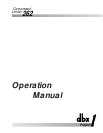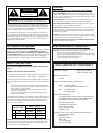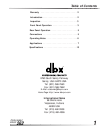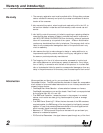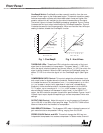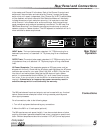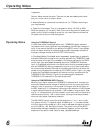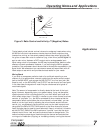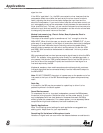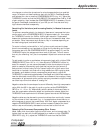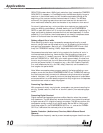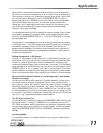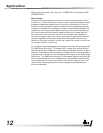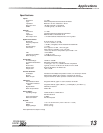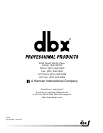
mic changes, or when the dynamics of a voice changes relative to a vocalist’s
range. To smooth out these variations, start with the 262 in OverEasy® mode
and adjusted for a low to medium COMPRESSION RATIO (e.g., 4:1). Adjust the
THRESHOLD control so that the GAIN REDUCTION meters show 6 dB to 10 dB
of gain reduction, then increase the COMPRESSION RATIO if necessary. Due to
the gentle OverEasy® characteristic of your 262 you will find that even fairly
high ratios are handled transparently.
Smoothing Out Variations (and Increasing Sustain) in Musical Instrument
Levels
To achieve a smoother electric (or electronic) bass sound, compress the instru-
ment’s output with a COMPRESSION RATIO of approximately 4:1, then adjust
the THRESHOLD control for 10dB to 12dB of gain reduction. Compression
lessens the loudness variations among the strings and increases the bass’ inher-
ent sustain. Other instruments, such as horns, vary in loudness depending on
the note being played, and benefit similarly.
To control untimely volume shifts in “hot” guitar or synth parts and to keep
them from overloading your tape deck or mixer during recording and live per-
formances, start with the COMPRESSION RATIO at approximately 5:1 and the
THRESHOLD set to the average maximum level of the track. This will ensure
that only the offending “hot” part is compressed. Adjust both controls as neces-
sary.
To add sustain to guitar or synthesizer string sounds, begin with a higher COM-
PRESSION RATIO (from 10:1 to °:1), then adjust the THRESHOLD control to
taste. For example, you can use a compressor to alter the envelope of a synth
patch to create an otherworldly synth pad that has just the right amount of
body and soul without losing its initial impact: begin with a synth sound that
has a bite on its attack, but ends with a long release time. While playing slow,
but steady, synth stabs or chords, compress the sound heavily; adjust the
THRESHOLD to taste and toggle between OverEasy® and Hard Knee modes to
hear the effect each mode has on the attack and release of the envelope. Heavy
compression of guitars and synths, as they are being recorded to digital formats,
can often help revive their sense of “analog life.”
Negative ratios alter the envelope of a sound differently than high compression
ratios. With the 262 in the path of a synth or guitar, set the COMPRESSION
RATIO to -1:1, -2:1 or -5:1. Methodically strike a series of chords and listen to
how the compression softens the attack and quickens the release. Adjust the
THRESHOLD and experiment with different types of sounds and 262 settings.
Negative ratios can also be used to prevent musicians from continually increas-
ing the volume of their instrument (e.g., in live applications where there is no
sound engineer to control the house levels). With their signal compressed by a
negative COMPRESSION RATIO, each volume increase initiated at the instru-
ment or amp would actually decrease the volume level at the final mix.
Fattening Kick Drums and Compressing Other Drums
Weak, flabby kick drums often have too much boom, and not enough slap. To
tighten them up, start with the 262 adjusted for a medium to high COMPRES-
SION RATIO (e.g., 6:1), adjust the THRESHOLD control so that the GAIN
Compressor/
Limiter
262
9
Applications



